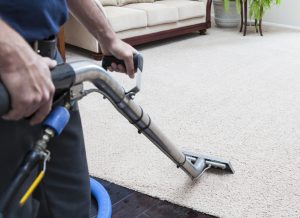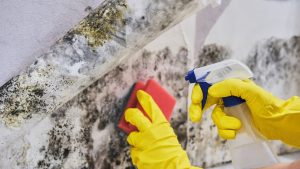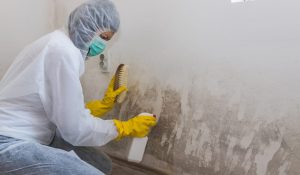
Mould is a silent invader that can wreak havoc on your property and health. It thrives in damp environments, often hidden from sight, gradually causing damage.
Recognizing the signs of mould infestation is crucial. It allows for timely intervention, preventing further damage and health risks. This article aims to guide you through these signs, emphasizing the need for professional mould remediation services.
We will delve into the health risks associated with mould exposure. From respiratory problems to allergic reactions, the impact on health can be significant. We will also discuss the economic cost of mould damage to properties.
Understanding the mould remediation process is essential. It’s not just about cleaning; it’s about creating a healthy living environment. We will explain this process, highlighting the role of professional services like Flood Squad Australia.
By the end of this article, you will learn how to find mold problems and what to do about them right away.
Let’s begin our journey towards a mould-free living environment.
Understanding Mould and Its Impacts on Health and Property
Mould is a type of fungus that grows in multicellular filaments called hyphae. It thrives in moist environments, often resulting from water damage or high humidity. Mould can grow on a variety of surfaces, including wood, carpet, and insulation, making it a common issue in homes and buildings.
The presence of mould can have significant impacts on both health and property. It releases spores into the air, which can be inhaled by building occupants. This can lead to a range of health issues, particularly for those with existing respiratory conditions or immune deficiencies.
On the property front, mould can cause structural damage over time. It can weaken building materials, leading to costly repairs or replacements. Moreover, a property infested with mould can lose its market value, making it less appealing to potential buyers or tenants.
The Health Risks Associated with Mould Exposure
Exposure to mould can lead to a variety of health issues. These range from mild allergic reactions to serious respiratory problems. Symptoms can include coughing, sneezing, skin rashes, and eye irritation. In severe cases, mould exposure can trigger asthma attacks or lead to chronic respiratory conditions.
People with weakened immune systems are particularly at risk. They may develop fungal infections when exposed to certain types of mould. Moreover, some mould species produce mycotoxins, which can cause serious health effects when inhaled, ingested, or come into contact with the skin.
It’s important to note that not everyone will react the same way to mould exposure. Some people may experience severe symptoms, while others may not show any signs at all. However, the potential health risks make it crucial to address mould issues promptly and professionally.
The Economic Cost of Mould Damage to Properties
Mould can cause significant economic damage to properties. It can degrade building materials, leading to structural instability and the need for costly repairs. Walls, ceilings, floors, and even the structural framework of a building can be affected.
In addition to the physical damage, mould can also lead to a decrease in property value. A visible mould issue can deter potential buyers or tenants, impacting the marketability of a property. Moreover, the presence of mould can lead to legal issues, particularly in rental properties where landlords are required to provide a safe and healthy living environment.
Lastly, the cost of professional mould remediation services should be considered. While this can be a significant expense, it’s an investment in the health and safety of building occupants and the long-term integrity of the property. It’s also worth noting that some insurance policies may cover mould remediation services, depending on the cause of the mould growth.
Critical Signs That Indicate the Need for Mould Remediation Services
Recognizing the signs of a mould problem is the first step towards addressing it. While some signs are obvious, others can be subtle and easily overlooked. Here are some critical signs that indicate the need for professional mould remediation services:
- Visible mould growth or discoloration
- Musty odors
- Persistent health symptoms
- Signs of water damage or moisture issues
Visible Mould Growth and Discoloration
Visible mould growth is a clear sign of a mould problem. It often appears as a fuzzy or slimy patch that may be green, black, white, or other colors. Even small patches of visible mould can indicate a larger, hidden problem.
Discoloration of walls, ceilings, or floors can also be a sign of mould. This can appear as stains or spots of different colors. It’s important to note that not all discoloration is due to mould. However, if it’s accompanied by other signs, it’s likely time to call in the professionals.
Musty Odors and Persistent Health Symptoms
A musty odor is a telltale sign of hidden mould growth. Mould releases microbial volatile organic compounds (MVOCs) as it grows, which produce this distinctive smell. If you notice a musty odor in your home or building, it’s a good idea to have a mould inspection.
Persistent health symptoms can also indicate a mould problem. If you or others in the building are experiencing symptoms such as coughing, sneezing, headaches, or other allergic reactions, it could be due to mould exposure. It’s especially important to pay attention to these symptoms if they improve when you leave the building and worsen when you return.
Water Damage and Moisture Issues
Water leaks, condensation, and flooding are common causes of mould growth. If you’ve had any water damage in your property, it’s crucial to watch for signs of mould in the following weeks and months. Mould can grow quickly in moist environments, often within 24 to 48 hours.
Signs of moisture issues can include water stains, peeling or bubbling paint, and warped or bulging walls or ceilings. High humidity levels can also lead to mould growth. If you notice condensation on windows or a humid, damp feeling in the air, it may be time to consider mould remediation services.
The Mould Remediation Process Explained
Understanding the mould remediation process can help you appreciate the importance of professional services. It’s not just about cleaning the visible mould. It’s a comprehensive process that addresses the root cause and prevents future growth.

Inspection and Assessment by Mould Remediation Experts
The first step in the mould remediation process is a thorough inspection. This is conducted by trained experts who can identify hidden mould and assess the extent of the infestation. They use specialized equipment to detect mould behind walls and other hard-to-reach places.
The inspection also involves identifying the source of moisture. This is crucial because without addressing this, mould is likely to return after removal. The assessment will determine the best course of action for mould remediation.
Containment and Filtration Techniques
Once the mould and its source have been identified, the next step is containment. This involves isolating the affected area to prevent the spread of mould spores during the removal process. Professionals use advanced containment procedures like negative air chambers and physical barriers.
Filtration is another key part of the process. High-efficiency particulate air (HEPA) filters are used to capture microscopic mould spores in the air. This helps to improve indoor air quality and prevent the spread of mould.
Professional Mould Removal and Restoration
The actual mould removal process involves cleaning and treating the affected areas with antimicrobial and antifungal treatments. This not only removes the mould but also prevents future growth. Depending on the extent of the mould damage, materials may need to be removed and replaced.
The final step is restoration, which can involve minor repairs like replacing drywall, or major repairs like reconstructing entire rooms. The goal is to restore your property to its pre-mould condition and ensure a safe, healthy environment.
Why Choose Flood Squad Australia for Your Mould Remediation Needs
When it comes to mould remediation, choosing the right service provider is crucial. Flood Squad Australia stands out for its commitment to quality, safety, and customer satisfaction. They offer comprehensive mould remediation services that address the root cause of mould growth.
Certified and Experienced Technicians
Flood Squad Australia boasts a team of certified and experienced technicians. They undergo rigorous training to handle various mould situations. Their expertise ensures that mould remediation is done thoroughly and safely, minimizing the risk of recurrence.
The team’s experience also means they can handle complex and large-scale mould issues. They are equipped to provide solutions tailored to each case, ensuring effective and efficient mould remediation.
Advanced Mould Remediation Technologies and Practices
Flood Squad Australia uses advanced mould remediation technologies and practices. They utilize the latest equipment and techniques to ensure thorough mould removal and prevention. This includes the use of HEPA filters, antimicrobial treatments, and advanced containment procedures.
Moreover, they stay updated with the latest industry standards and regulations. This commitment to continuous learning and improvement ensures that they provide the best possible service to their clients.
Conclusion: The Importance of Timely Mould Remediation
In conclusion, timely mould remediation is crucial to maintaining a healthy living environment. Ignoring signs of mould can lead to serious health issues and property damage.
By choosing a professional service like Flood Squad Australia, you invest in the health and safety of your home or property. Their comprehensive approach ensures effective mould removal and prevention, safeguarding your property’s integrity and value. With offerings like mould inspection, mould removal and mould restoration you know you are in the right hands.



